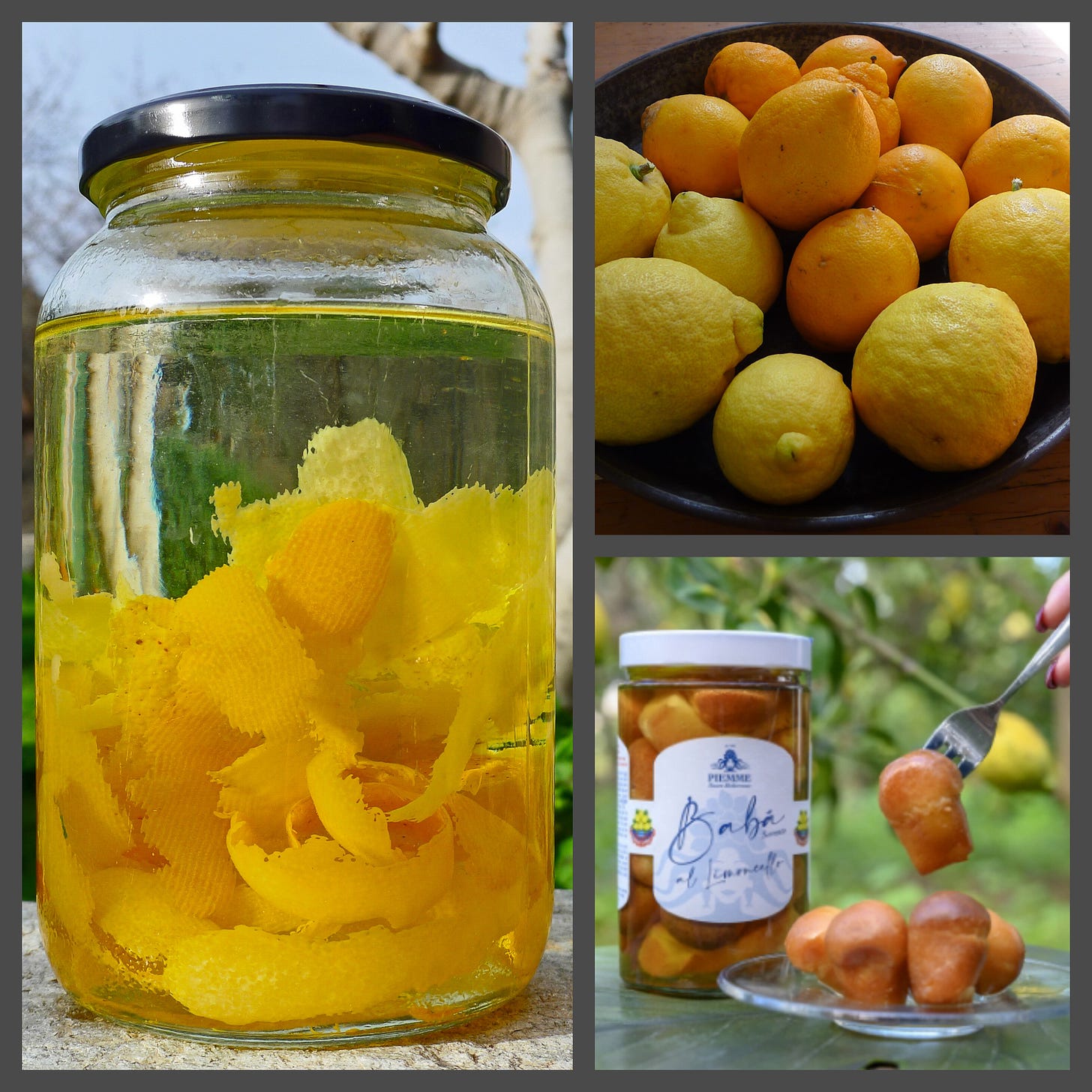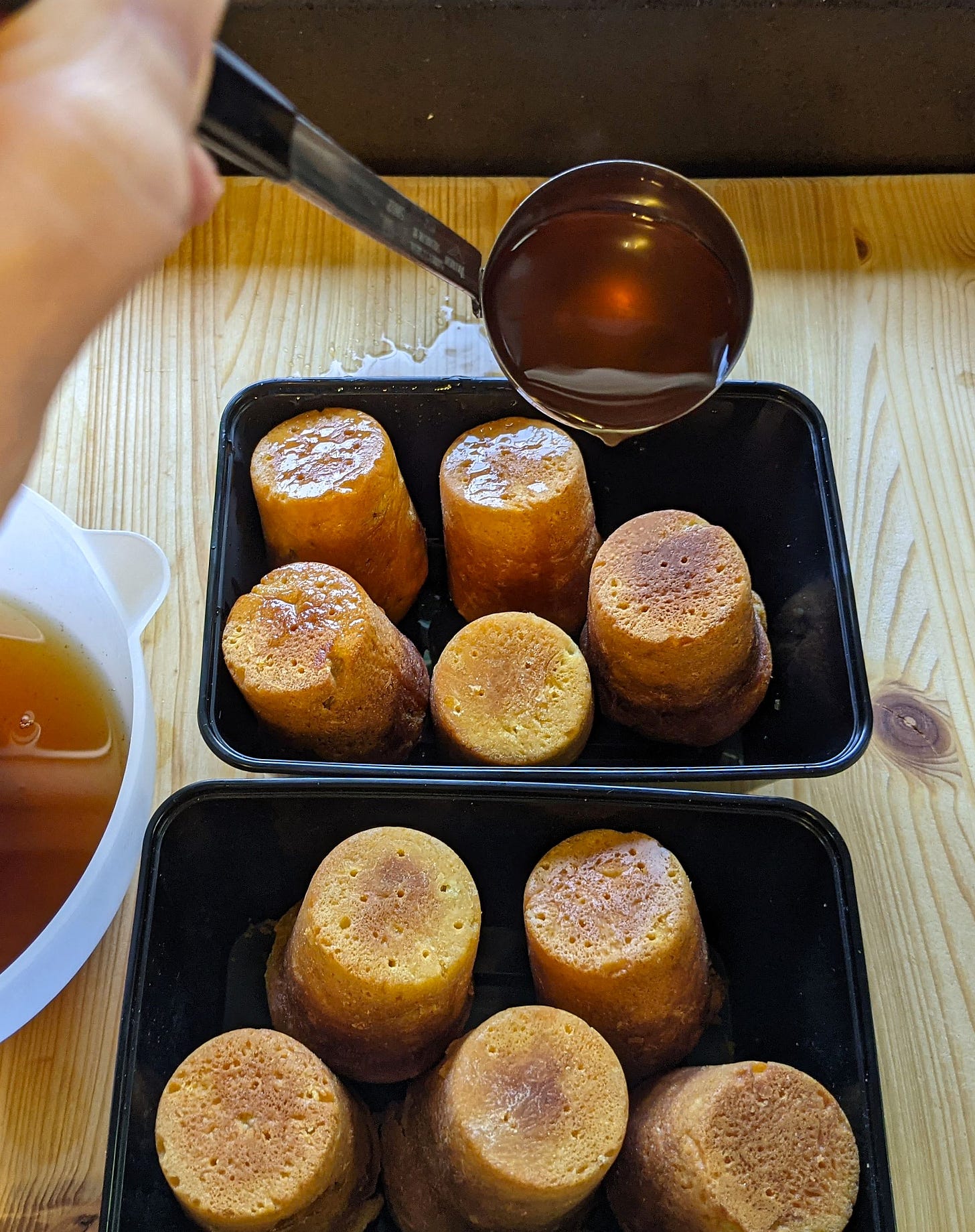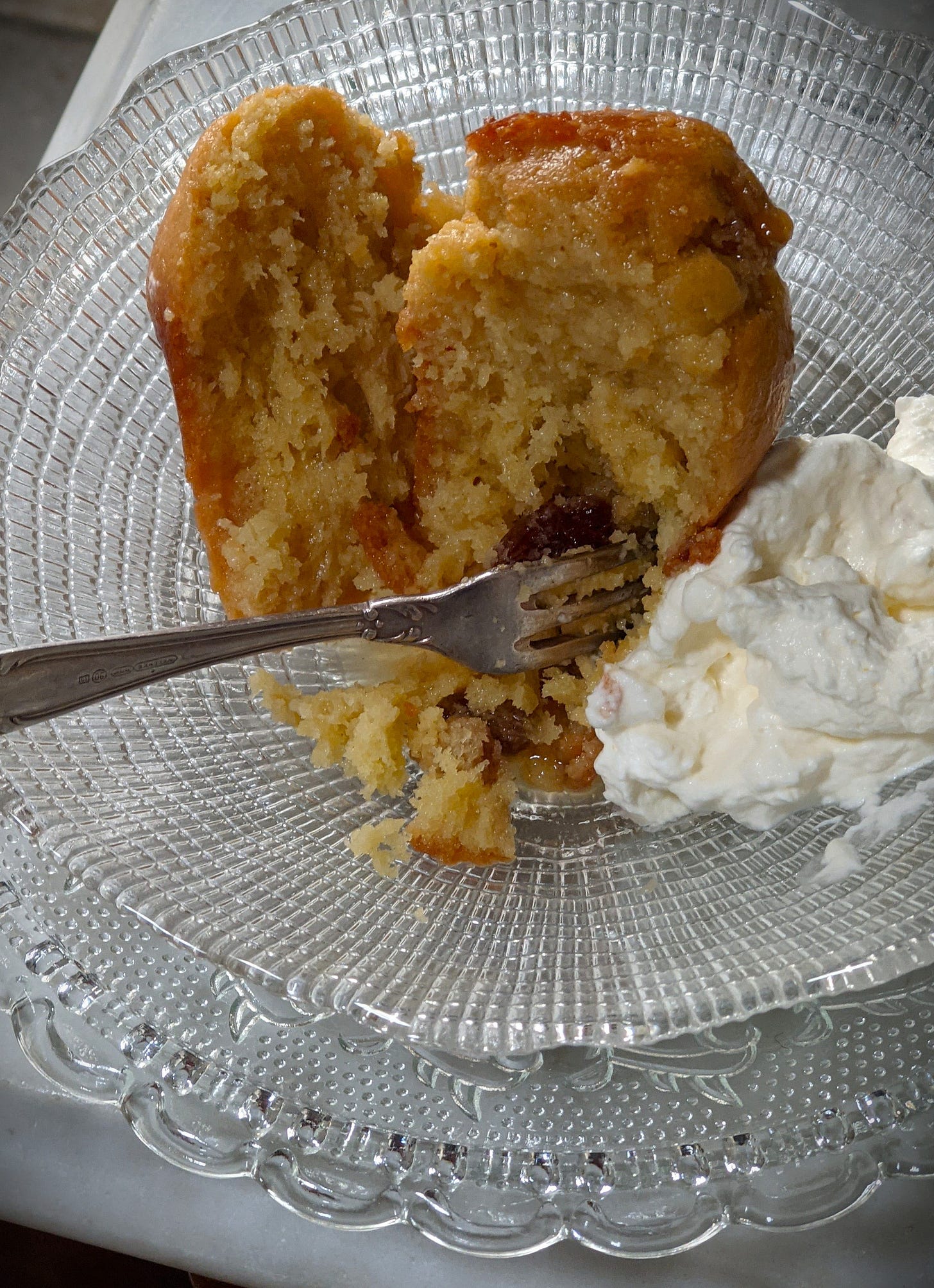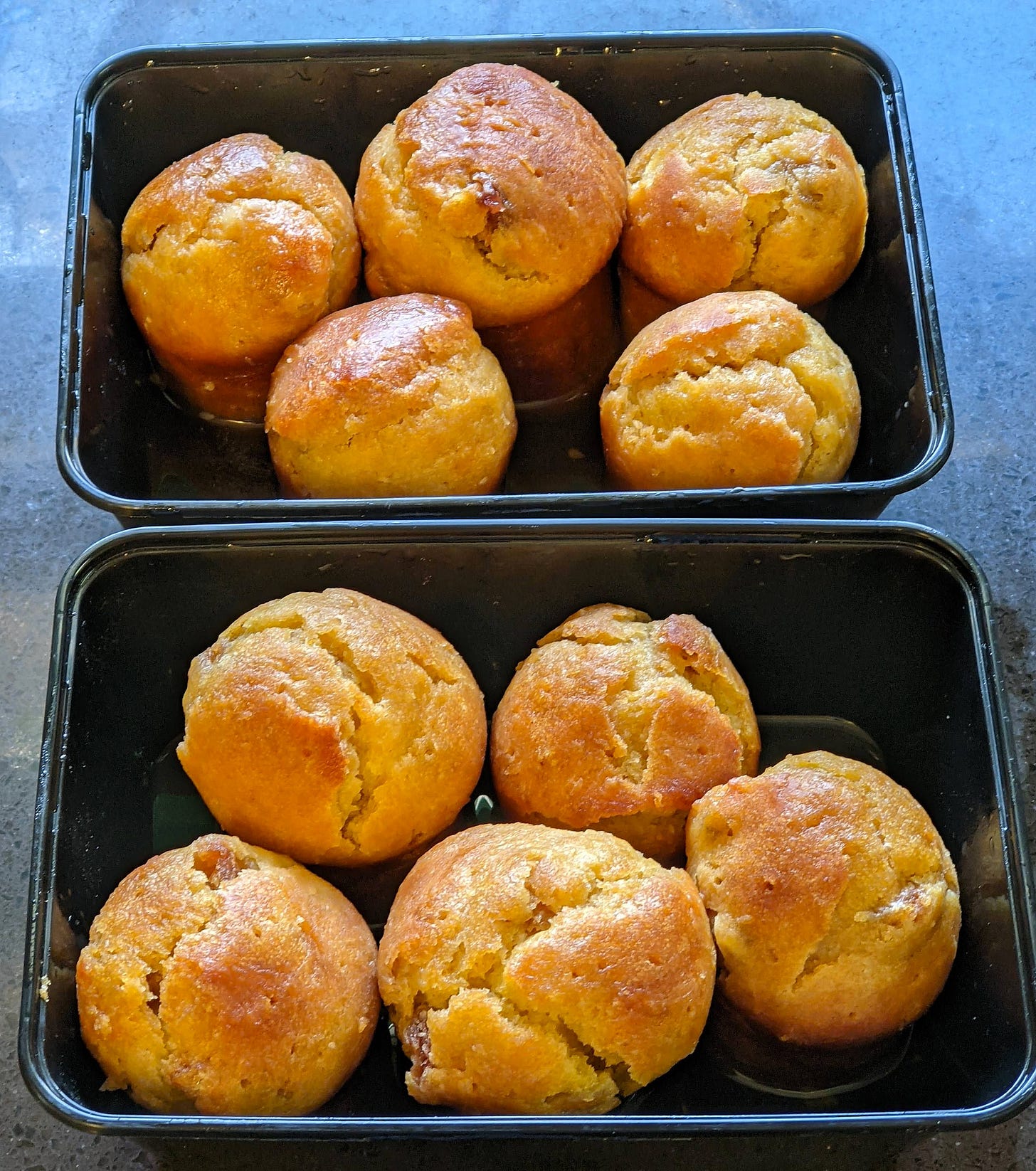Baba aux Lemon-Bergamot Liqueur
This rich, yeast-leavened cake is traditionally soaked in rum syrup. Mostly famous in France, its story and name is linked to the Polish "babka." Here is my Mediterranean, citrusy version.
Its history began in the 18th century with the exiled Polish King Stanislas Leszczyński in Lorraine, France. He found his cake, probably a brioche or kugelhof, too dry and asked his pastry chef, Nicolas Stohrer, to moisten it with alcohol. So the idea of adding alcohol was the king’s according to this version of the story.
This would have never happened in Greece or in other Eastern Mediterranean countries, where almost all our sweet leavened or unleavened breads/desserts, glyka tapsiou (baking pan sweets) as we call them, are traditionally doused in syrup. The modern dry cakes came to us much later from Europe and the US.
In any event the king’s pastry chef, Nicolas Stohrer, soaked the cake in sweet wine, and later he refined the dessert when he opened his bakery in Paris in 1730, swapping the wine for rum to create the sumptuous, modern “baba au rhum”. It happens to be my favorite when it is well made —unfortunately, seldom so these days.
On a trip to Sicily I found in the multiple tourist shops small and larger jars with babas in an aromatic limoncello syrup. This gave me the idea to replace rum with my trade-mark lemon-bergamot liqueur that all our guests love.
Bergamots give Earl Gray Tea its aroma. “Genetic research into the ancestral origins of extant citrus cultivars found bergamot orange to be a probable hybrid of lemon (itself a hybrid between bitter orange and citron) and bitter orange, according to Wikipedia. ‘The word bergamot is derived from the Italian word bergamotto, derived either from the Italian town of Bergamo or Ottoman Turkish beg armudu (بك آرمودی, ‘prince’s pear’)”

It is not the easiest dessert to make, as it involves a few steps and it is better to start a day in advance (scroll down for the recipes of both the liqueur and the babas.)

Babas in Lemon-Bergamot syrup
I’m adapting a version of baba au rum that my friend David Tanis featured in a captivating menu he published in the NYT Cooking section four years ago. I have replaced the butter with olive oil as I usually do. Tanis advises that the dough is meant to be soft and sticky for a light, delicate outcome, suggesting minimal flour or chilling the dough to make it easier to work with.
He also mentions that you can bake all 12 babas and only soak those you plan to serve, and that unsoaked, baked babas can be frozen for up to two months, then prepared a day ahead and stored at room temperature in an airtight container. His rum syrup is fragrant with cinnamon, cloves, cardamom and vanilla, and he notes that any leftover syrup keeps indefinitely in the fridge.
For 12 small babas



